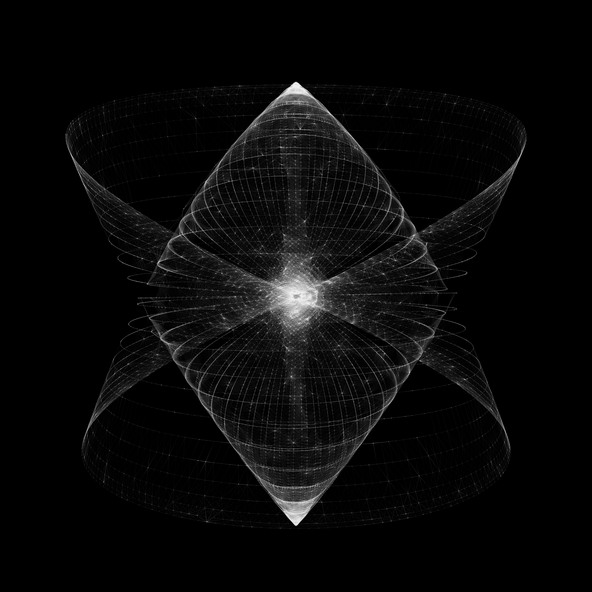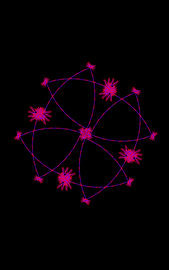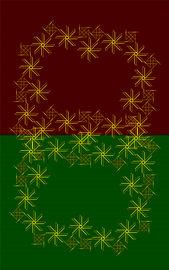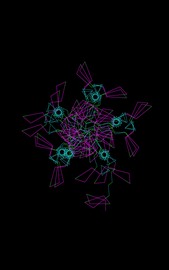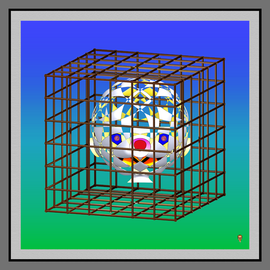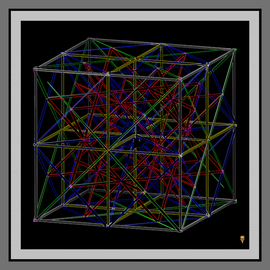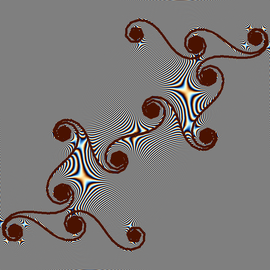Lissajous figures
galería
Lissajous figures
Lissajous figures, named after the 19th century French mathematician Jules Antoine Lissajous, are curves determined by the intersection of two perpendicular oscillating movements. The horizontal (x) and vertical (y) position of each point is calculated with a formula that compares the frequencies of two sine waves. Here the waves are modulated, in other words, the frequency of one sine wave controls the amplitude of the other. The triangles you see are not part of the original Lissajous creation. In this artistic representation, additional lines are drawn between pairs of vertices located close enough in the space, to form a web like representation of the surface.
Minor Third
Licencia CC BY-NC-SA-3.0
Major Seventh
Licencia CC BY-NC-SA-3.0

|
|
Octave
Licencia CC BY-NC-SA-3.0
Octave 2
Licencia CC BY-NC-SA-3.0
Octave phi
Licencia CC BY-NC-SA-3.0
Whole Step
Licencia CC BY-NC-SA-3.0
Forth
Licencia CC BY-NC-SA-3.0



